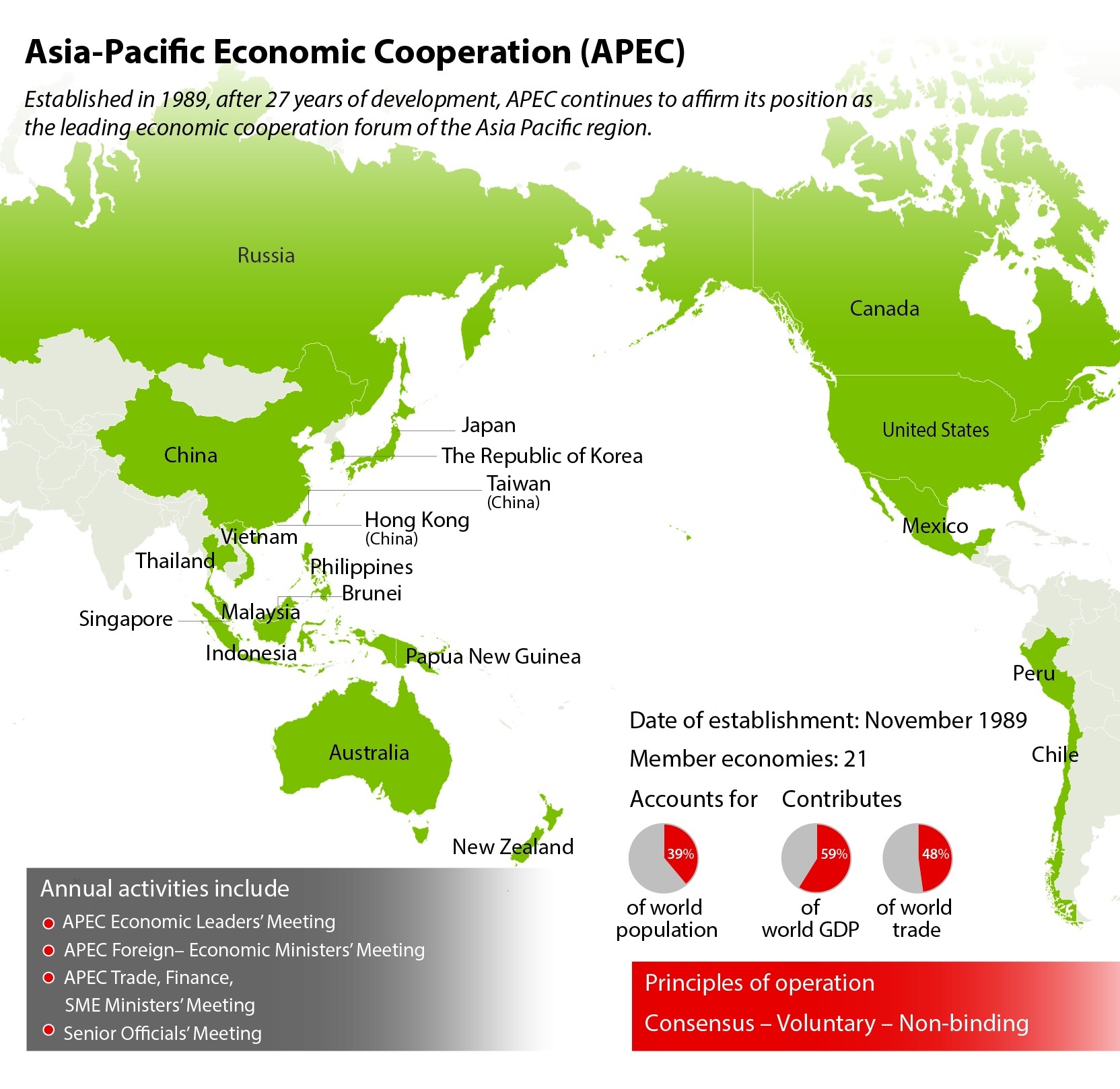Why in the News?
The 32nd APEC Economic Leaders’ Summit (2025) is being held in Gyeongju City, South Korea
About Asia-Pacific Economic Cooperation (APEC):
- Establishment: Created in 1989 as a regional economic forum to enhance the growing interdependence of the Asia-Pacific region.
- Objective: Promote balanced, inclusive, sustainable, innovative, and secure growth, and accelerate regional economic integration.
- Membership: Comprises 21 member economies– Australia, Brunei, Canada, Chile, China, Hong Kong, Indonesia, Japan, South Korea, Malaysia, Mexico, New Zealand, Papua New Guinea, Peru, the Philippines, Russia, Singapore, Taiwan, Thailand, the United States, and Vietnam.
- Secretariat: Headquartered in Singapore, coordinating policy dialogues, working groups, and capacity-building across member economies.
- Decision-Making Principle: Functions on voluntary, non-binding, and consensus-based commitments rather than treaty obligations.
- Economic Scale: Represents 2.9 billion people, accounting for ~60% of global GDP and ~48% of global trade.
- Terminology: Refers to its members as “economies” (not countries) to accommodate non-sovereign entities like Hong Kong and Taiwan.
- Major Frameworks:
- Bogor Goals (1994) – Free and open trade and investment in the Asia-Pacific.
- APEC Putrajaya Vision 2040 – Envisions an open, dynamic, resilient, and peaceful Asia-Pacific community by 2040.
- Focus Areas: Trade liberalisation, digital economy, supply chain resilience, sustainable energy, and inclusive growth.

India and APEC:
- Membership: India is NOT a member but has shown consistent interest since the early 1990s, aligning with its Look East / Act East Policy.
- Geographical Criterion: APEC’s membership is limited to Asia-Pacific economies, while India is categorised under South Asia, restricting eligibility.
- Economic Context: India’s gradual liberalisation in the 1990s contrasted with APEC’s open market orientation, reducing its early appeal to members.
- Political Resistance: China has reportedly opposed India’s entry to maintain regional influence and prevent rival power balancing.
- Moratorium: A 1997 freeze on new memberships continues to block India’s formal inclusion.
- Current Engagement: Participates in Track-II dialogues, observer consultations, and partner discussions with APEC economies.
- Strategic Significance:
- APEC economies drive 60% of world GDP and 48% of global trade.
- Membership would improve market access, FDI inflows, and digital integration.
- Enhances India’s engagement with U.S., Japan, China, and ASEAN through multilateral diplomacy.
- Alternative Platforms: India engages APEC members via BRICS, QUAD, IPEF, and RCEP-linked forums, expanding Indo-Pacific economic influence.
- Future Outlook: Once the moratorium is lifted, India’s robust economic scale, digital economy, and supply chain capacity make it a strong candidate for future APEC membership.
| [UPSC 2017] With reference to `Asia Pacific’ Ministerial Conference on Housing and Urban Development (APMCHUD)’, consider the following statements:
1. The first APMCHUD was held in India in 2006 on the theme `Emerging Urban Forms – Policy Responses and Governance Structure’. 2. India hosts all the Annual Ministerial Conferences in partnership with ADB, APEC and ASEAN. Which of the statements given above is/are correct? Options: (a) 1 only (b) 2 only (c) Both 1 and 2 (d) Neither 1 nor 2* |
Get an IAS/IPS ranker as your 1: 1 personal mentor for UPSC 2024

